Last summer in the Canadian Rockies, we stopped to check out an extraordinary high-contrast exposure of calcite veins in cleaved limestone:
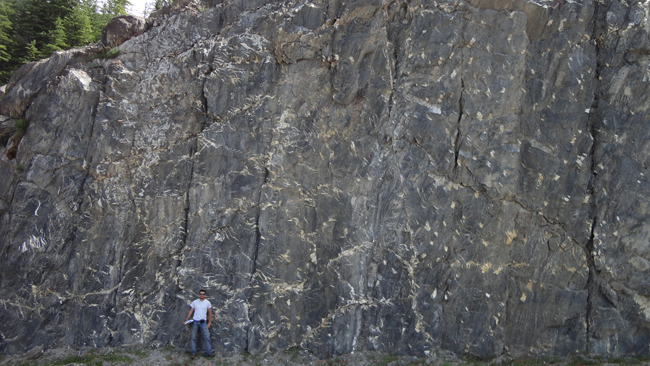
There were your typical (but classic) en echelon lightly-folded tension gashes:
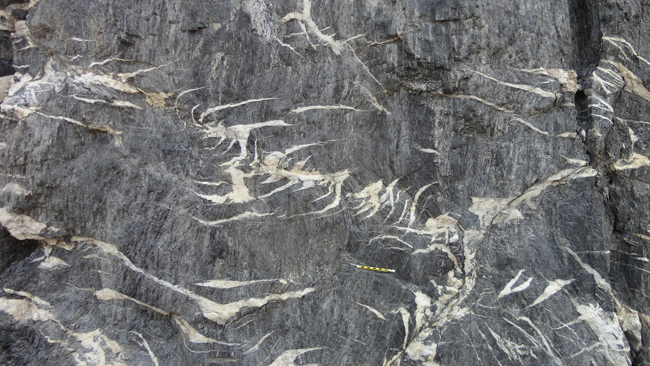
…But there were also these (unique, in my experience) clusters of short, squat veinlets:
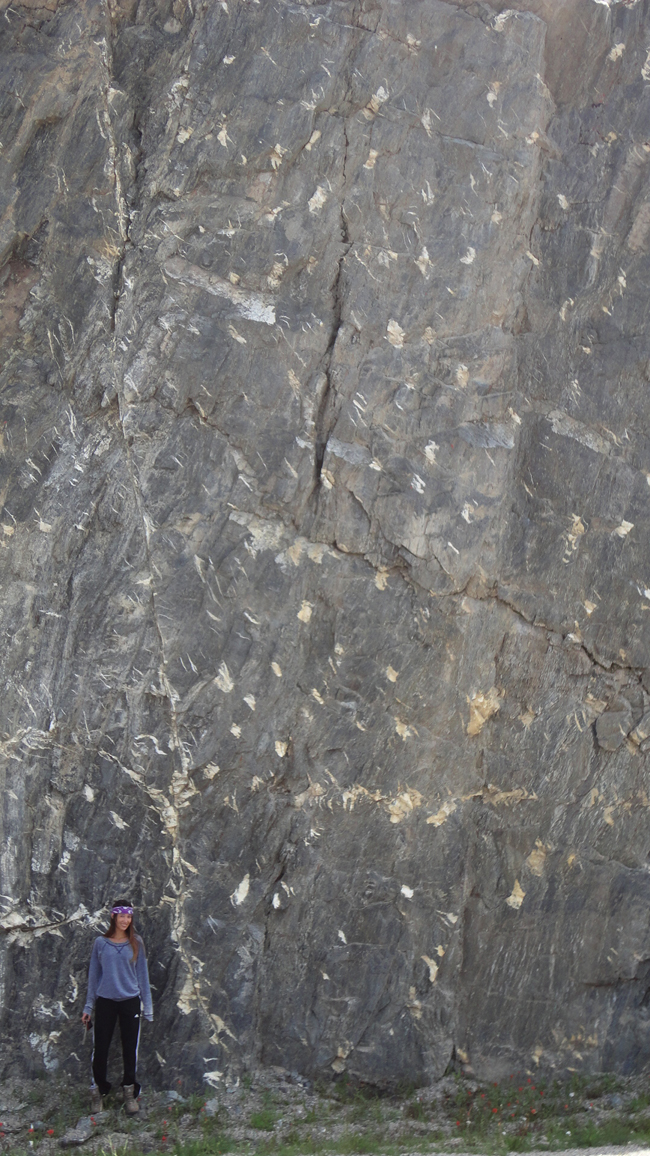
We were eager to get out and examine the outcrop…
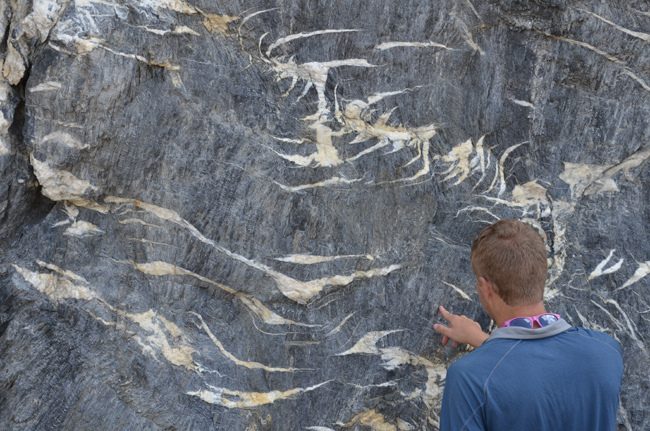
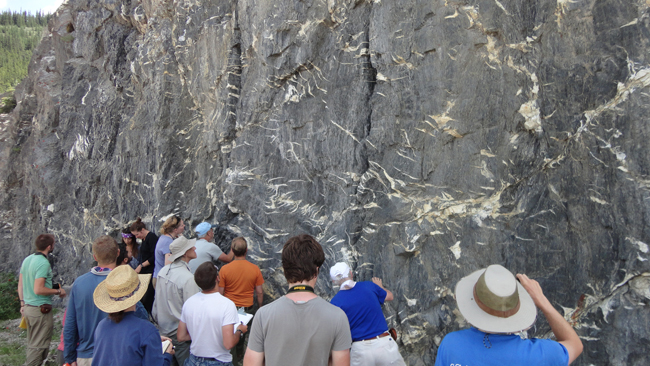
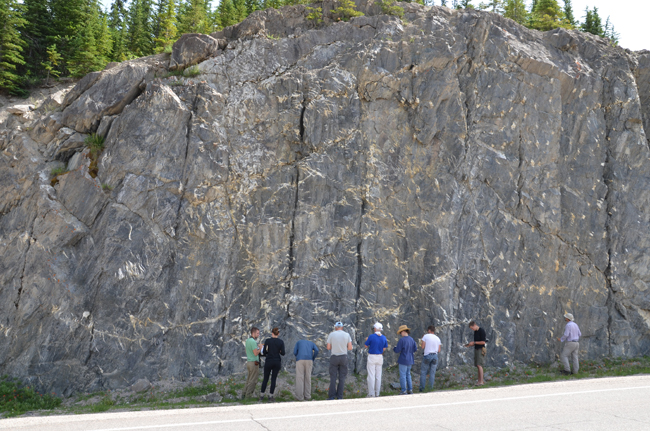
In his book Canadian Rockies Geology Road Tours, Ben Gadd indicates that this is the Bison Creek Formation, a late Cambrian carbonate unit.
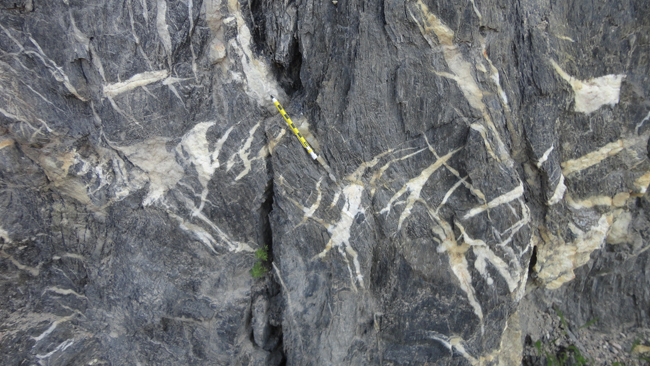
The tension gashes here are due to stresses when the Bison Creek strata were bent into a sharp footwall syncline below the Simpson Pass thrust fault.
The thing that really struck me about this outcrop was the variety of sizes of veins. There were big ones and little ones, relatively planar ones, and folded ones…
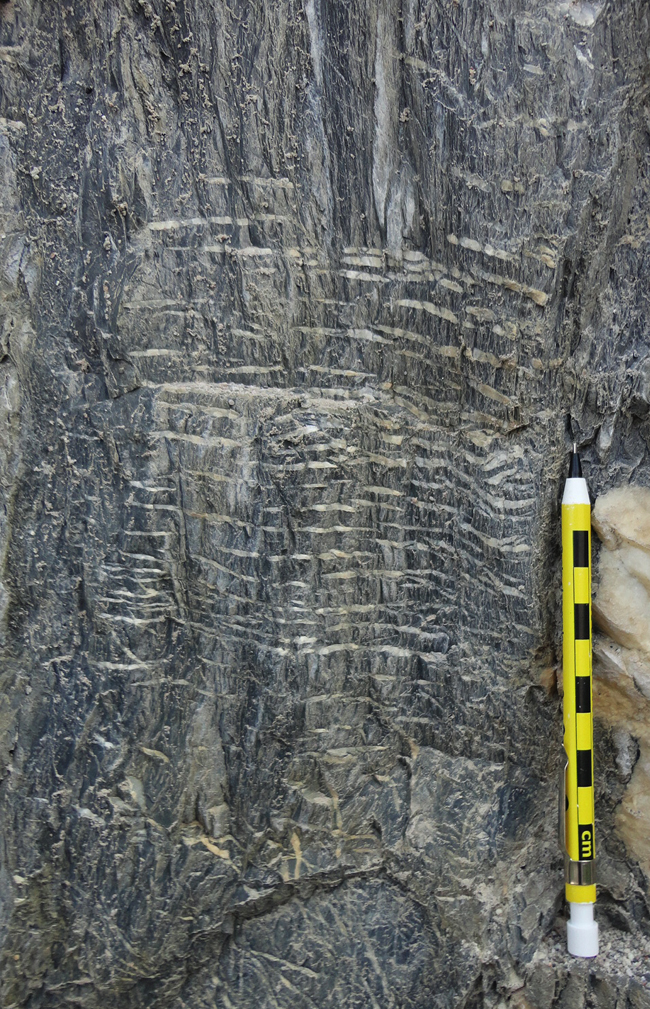
Veins (dipping to the right) vs. bedding (subvertical or dipping steeply to the left):
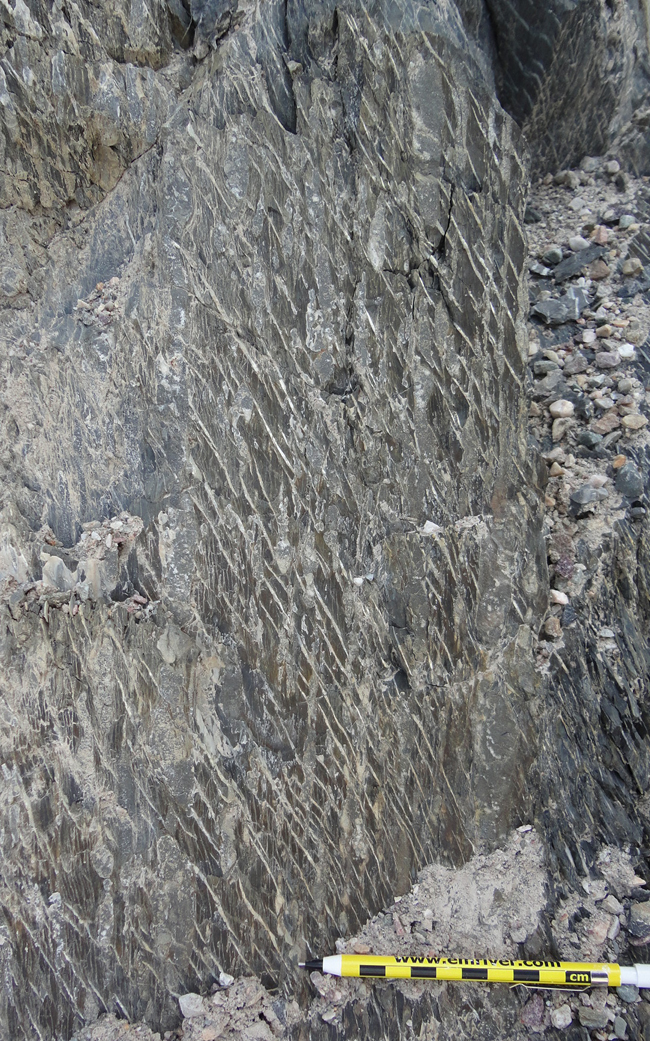
The calcite that fills the veins is likely derived from this same Bison Creek rock, but not 100% of the rock goes into solution when stressed. The organic constituents and the clays aren’t soluble in the same way that the calcite is, so the dark stuff stays behind, and a “pure” calcite is “distilled” from the Bison Creek strata. It’s that constituent which goes on to form the vein-filling stuff.
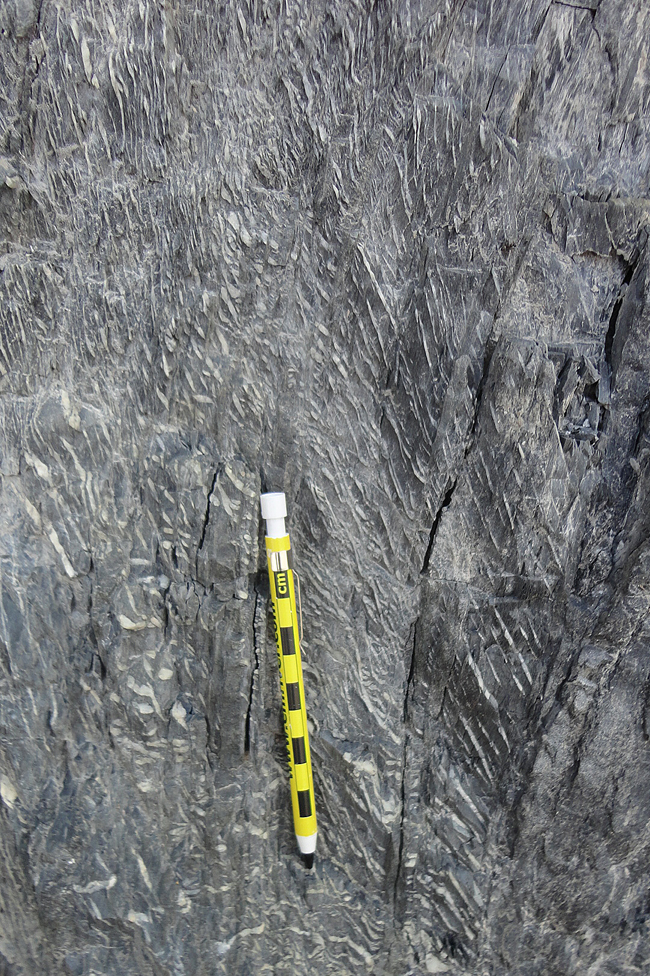

A contrast in orientations:
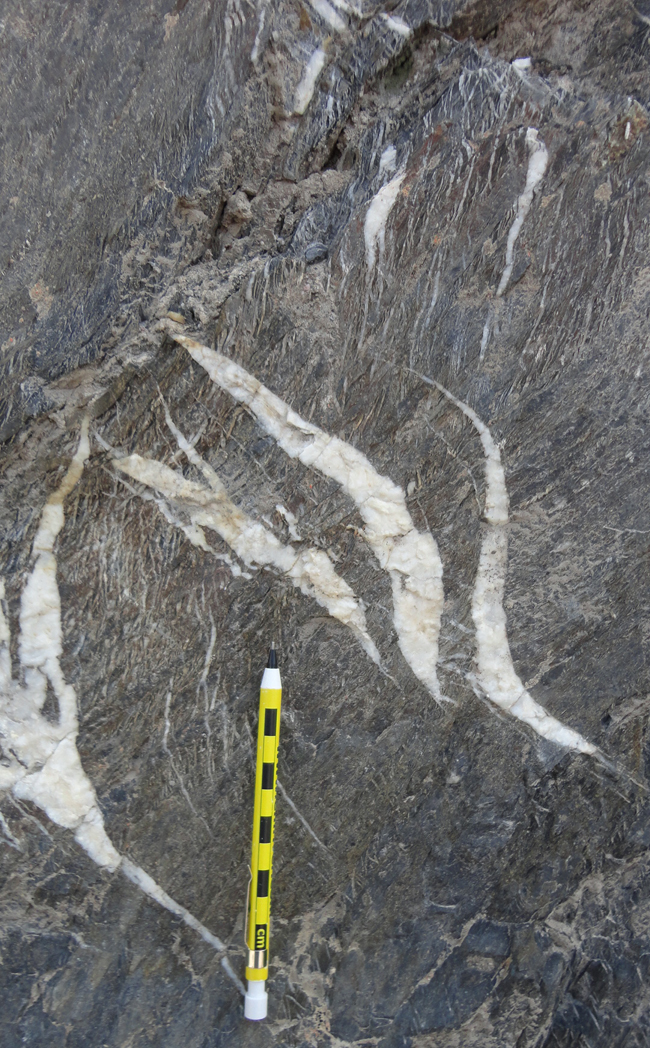
A contrast in sizes:
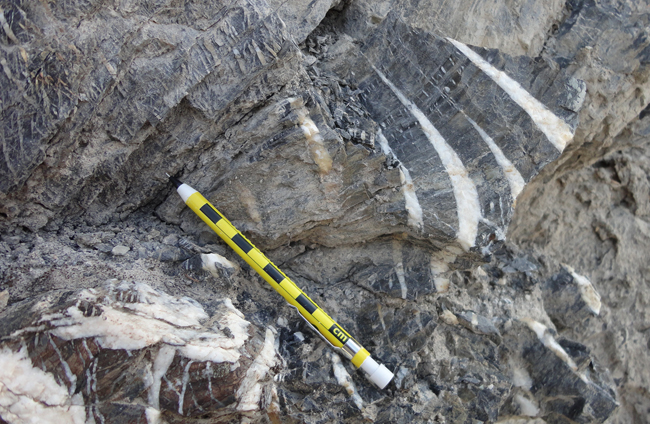
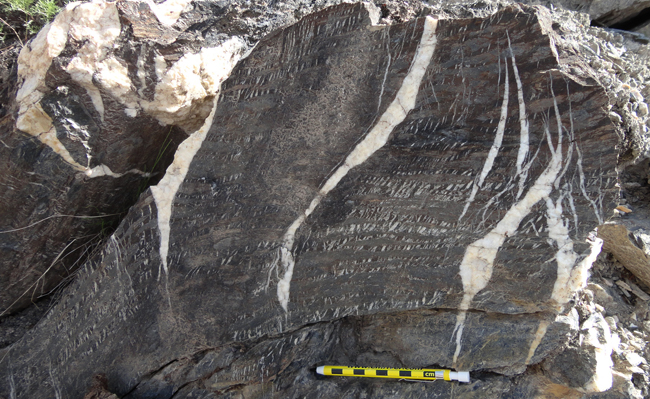
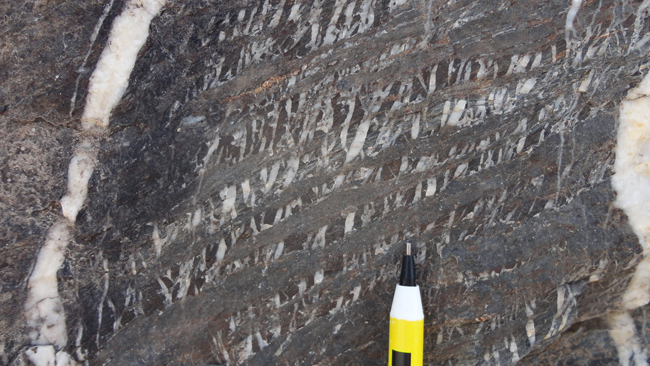
Visually, it doesn’t get much better than this. Awesome place.
